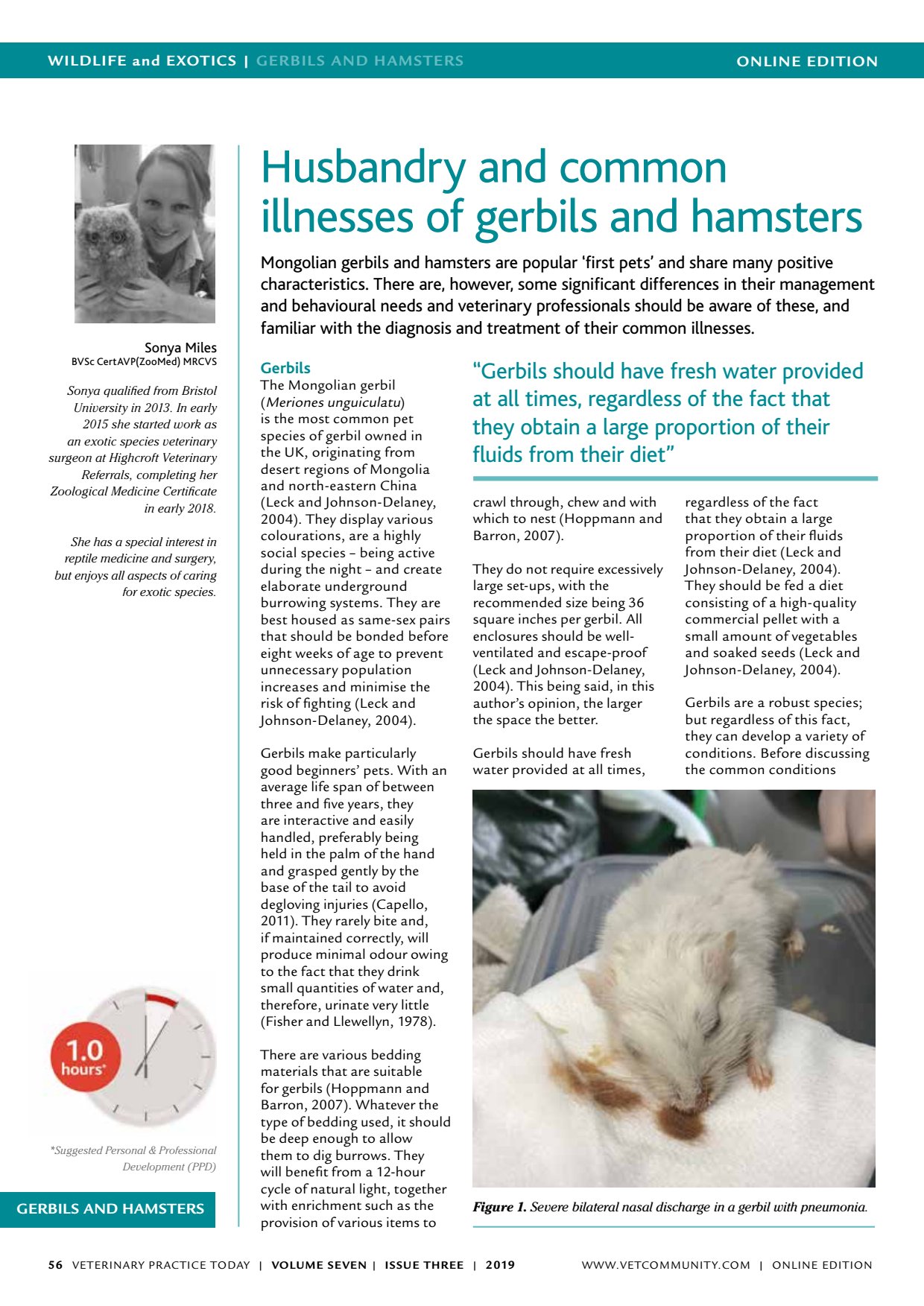Husbandry common illnesses
ONLINE EDITIONWILDLIFE and EXOTICS | GERBILS AND HAMSTERS VETERINARY PRACTICE TODAY | VOLUME SEVEN | ISSUE THREE | 2019 56 GERBILS AND HAMSTERS Suggested Personal & Professional Development (PPD) Sonya Miles BVSc CertAVP(ZooMed) MRCVS Sonya qualified from Bristol University in 2013. In early 2015 she started work as an exotic species veterinary surgeon at Highcroft Veterinary Referrals, completing her Zoological Medicine Certificate in early 2018. She has a special interest in reptile medicine and surgery, but enjoys all aspects of caring for exotic species. Husbandry and common illnesses of gerbils and hamsters Mongolian gerbils and hamsters are popular first pets and share many positive characteristics. There are, however, some significant differences in their management and behavioural needs and veterinary professionals should be aware of these, and familiar with the diagnosis and treatment of their common illnesses. Gerbils The Mongolian gerbil (Meriones unguiculatu) is the most common pet species of gerbil owned in the UK, originating from desert regions of Mongolia and north-eastern China (Leck and Johnson-Delaney, 2004). They display various colourations, are a highly social species being active during the night and create elaborate underground burrowing systems. They are best housed as same-sex pairs that should be bonded before eight weeks of age to prevent unnecessary population increases and minimise the risk of fighting (Leck and Johnson-Delaney, 2004). Gerbils make particularly good beginners pets. With an average life span of between three and five years, they are interactive and easily handled, preferably being held in the palm of the hand and grasped gently by the base of the tail to avoid degloving injuries (Capello, 2011). They rarely bite and, if maintained correctly, will produce minimal odour owing to the fact that they drink small quantities of water and, therefore, urinate very little (Fisher and Llewellyn, 1978). There are various bedding materials that are suitable for gerbils (Hoppmann and Barron, 2007). Whatever the type of bedding used, it should be deep enough to allow them to dig burrows. They will benefit from a 12-hour cycle of natural light, together with enrichment such as the provision of various items to crawl through, chew and with which to nest (Hoppmann and Barron, 2007). They do not require excessively large set-ups, with the recommended size being 36 square inches per gerbil. All enclosures should be well- ventilated and escape-proof (Leck and Johnson-Delaney, 2004). This being said, in this authors opinion, the larger the space the better. Gerbils should have fresh water provided at all times, regardless of the fact that they obtain a large proportion of their fluids from their diet (Leck and Johnson-Delaney, 2004). They should be fed a diet consisting of a high-quality commercial pellet with a small amount of vegetables and soaked seeds (Leck and Johnson-Delaney, 2004). Gerbils are a robust species; but regardless of this fact, they can develop a variety of conditions. Before discussing the common conditions Figure 1. Severe bilateral nasal discharge in a gerbil with pneumonia. Gerbils should have fresh water provided at all times, regardless of the fact that they obtain a large proportion of their fluids from their diet WWW.VETCOMMUNIT Y.COM | ONLINE EDITION
